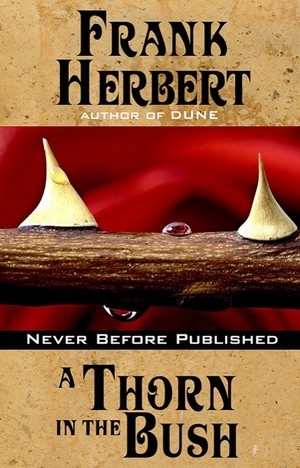As we saw in previous posts, science fiction fans everywhere should be eternally grateful that Frank Herbert (author of Dune) accompanied his friend Jack Vance to Chapala in 1953.

Frank Herbert, 1952. Photo by Jack Vance. (from Jorgensen, 2014)
They arrived in September and rented a house in Chapala for a couple of months. Several aspects of their joint trip to Mexico are endearingly told by Herbert’s elder son, Brian, in Dreamer of Dune: The Biography of Frank Herbert.
While the writers did cooperate on some “joint ventures” while in Chapala, they also wrote independently, hoping to sell some short stories to magazines north of the border and thereby extend their stay in Mexico. Herbert also completed a humorous short piece entitled “Life with Animalitos”, submitted to Reader’s Digest but never published, and worked on a psychological thriller set in a submarine, serialized in Astounding magazine as “Under Pressure”, and later turned into the book The Dragon in the Sea (1956).
What fans of Herbert’s writing did not learn until about a decade ago is that he also wrote an 18,000-word novella set entirely at Lake Chapala . The work remained unpublished during his lifetime (he died in 1986) but an ebook version was eventually published by his estate in 2014.
The story is entitled A Thorn in the Bush. According to the publicity blurb:
“Everything of beauty must have at least one flaw in it. Otherwise people do not realize how beautiful it truly is.
Mrs. Ross is an expatriate American who has found a quiet life in the small Mexican village of San Juan, a place where she can be content, a place where no one knows the secrets of her shadowy past life. Until an ambitious American painter takes up residence in San Juan, attempting to depict — and expose — everything about the sleepy Mexican town. But he may have underestimated the lengths a seemingly harmless old woman will go to protect her secrets.”
Mrs. Emma Ross is a streetwise and conniving 71-year-old who has amassed a property portfolio in the village since arriving there more than a decade ago in 1937. Mrs. Ross’ maid, Serena, is the hub of an extensive gossip network that ensures her mistress stays well appraised of local events and scandals.
When Mrs. Ross looks out from her balcony over the lake:
Toward the near shore the water held a deep ultramarine tone shading to cobalt. But farther out, the color faded into grey, then white—reflecting a fleecy billow of cumulus clouds piled over the distant hills: the first storm gathering of the season.”

The cast of characters includes the local mayor Don Jaime Cervelles y Madera, a former suitor of Ross, as well as his nephew, the local police chief, Roberto García y Machada, usually known as “Beto”.
Paulita Romera, who lives across the street from Mrs. Ross, is a beautiful, coquettish young lady who spends her time by a ground floor window sewing punta de cruz (cross-stitch) floral designs. In the morning light, she looks particularly captivating and is chosen by a young American visiting artist as the subject for his next painting.
The artist, Francis Andrew Hoblitt, is single, 28-years-old and drinks too much. He reminds Ross, uncomfortably, of someone who caused problems in her former (secret) life. Much of the novel revolves around the growing antagonism between Ross, the incumbent, and Hoblitt, the interloper. Eventually they agree an uneasy truce, despite their different motives for seeking a degree of reconciliation.
Early in the story, Herbert describes how:
Mrs. Ross studied Hoblitt: the intensity of the man at his work—slashing strokes of pencil, blots of black on the paper. The artist was a blond, athletic type with corded muscles showing at the shoulders beneath a white shirt. His features, as Mrs. Ross recalled, were stern, full of angular abruptness. He had been in San Juan only a month, but already was tanned a rich shade of golden oak.”
Frank Herbert (1920-1986) was a keen observer of local scenes, customs, sayings and cultural norms. During his relatively short time (about two months) in Chapala, he was clearly a particularly astute student of the different kinds of interactions between Americans and Mexicans. Skillful writing and his astute choice of telling details move this story along at a comfortable pace with plenty of perceptive insights into the complexities of expatriate life in Mexico.
Sources:
- Brian Herbert. 2003. Dreamer of Dune: the biography of Frank Herbert. (New York: Tom Doherty Associates).
- Frank Herbert. A Thorn in the Bush (Wordfire Press, 2014).
Note: this post was first published 2 September 2017.
Comments, corrections or additional material related to any of the writers and artists featured in our series of mini-bios are welcomed. Please use the comments feature at the bottom of individual posts, or email us.
Tony Burton’s books include “Lake Chapala: A Postcard History” (2022), “Foreign Footprints in Ajijic” (2022), “If Walls Could Talk: Chapala’s historic buildings and their former occupants” (2020), (available in translation as “Si Las Paredes Hablaran”), “Mexican Kaleidoscope” (2016), and “Lake Chapala Through the Ages” (2008).
Love this history –surprising who visited the Lake